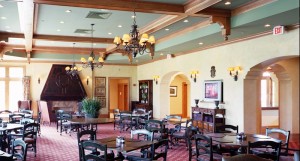 Four notable Choate Construction Company projects receive recognition in the ENR Southeast “Best Project” Competition, including three Best Project Awards, one Award of Merit, and the National “Excellence in Safety” Award. Clemson University’s SCE&G Energy Innovation Center – Best Project Energy/Industrial category Located within a decommissioned U.S. Navy warehouse atop a rehabilitated brownfield site, the 82,264-SF facility will support the critical testing of next generation off-shore wind turbines by allowing businesses to simulate in mere months over 20 years of rigors faced by the turbine systems at sea. Carter’s, Inc. – Best Project Interiors/Tenant Improvement category Carter’s 275,000-SF space highlights the company’s heritage of quality, innovation, and value throughout each of its 11 floors. While their products might be developed for a juvenile crowd, their office space is sophisticated and contemporary. Red Ventures – Best Project Office/Retail/Mixed-Use category Choate’s third project for powerhouse tech company Red Ventures is just as impressive and innovative as the rapidly-expanding company that will live within its walls. Phase three of the Red Ventures Corporate Campus features a striking five-story, 180,000-SF office building complete with a beer garden, six-lane bowling alley, lounge, and cafeteria. A soccer field, two tennis courts, two beach volleyball courts, and various recreation areas also help create the ultimate “work hard, play hard” corporate campus. University of North Carolina’s Marsico Hall – Award of Merit Higher Education/Research category and the National “Excellence in Safety” Award The University of North Carolina’s Marsico Hall is a contemporary nine-story, state-of-the-art lab and research facility servicing both UNC’s School of Medicine and the Eschelman School of Pharmacy. The 340,000-SF facility serves not only as the primary vehicle for both schools to advance their efforts in the area of cancer research, but has the flexibility to house the imaging technology of today and the yet-to-be developed research technology of the future. Winning projects were chosen from more than 100 entries by two judging panels. The winning projects now advance to national judging.
Four notable Choate Construction Company projects receive recognition in the ENR Southeast “Best Project” Competition, including three Best Project Awards, one Award of Merit, and the National “Excellence in Safety” Award. Clemson University’s SCE&G Energy Innovation Center – Best Project Energy/Industrial category Located within a decommissioned U.S. Navy warehouse atop a rehabilitated brownfield site, the 82,264-SF facility will support the critical testing of next generation off-shore wind turbines by allowing businesses to simulate in mere months over 20 years of rigors faced by the turbine systems at sea. Carter’s, Inc. – Best Project Interiors/Tenant Improvement category Carter’s 275,000-SF space highlights the company’s heritage of quality, innovation, and value throughout each of its 11 floors. While their products might be developed for a juvenile crowd, their office space is sophisticated and contemporary. Red Ventures – Best Project Office/Retail/Mixed-Use category Choate’s third project for powerhouse tech company Red Ventures is just as impressive and innovative as the rapidly-expanding company that will live within its walls. Phase three of the Red Ventures Corporate Campus features a striking five-story, 180,000-SF office building complete with a beer garden, six-lane bowling alley, lounge, and cafeteria. A soccer field, two tennis courts, two beach volleyball courts, and various recreation areas also help create the ultimate “work hard, play hard” corporate campus. University of North Carolina’s Marsico Hall – Award of Merit Higher Education/Research category and the National “Excellence in Safety” Award The University of North Carolina’s Marsico Hall is a contemporary nine-story, state-of-the-art lab and research facility servicing both UNC’s School of Medicine and the Eschelman School of Pharmacy. The 340,000-SF facility serves not only as the primary vehicle for both schools to advance their efforts in the area of cancer research, but has the flexibility to house the imaging technology of today and the yet-to-be developed research technology of the future. Winning projects were chosen from more than 100 entries by two judging panels. The winning projects now advance to national judging.
Four Choate Projects Win Awards for ENR “Best Projects” 2014
October 2014
